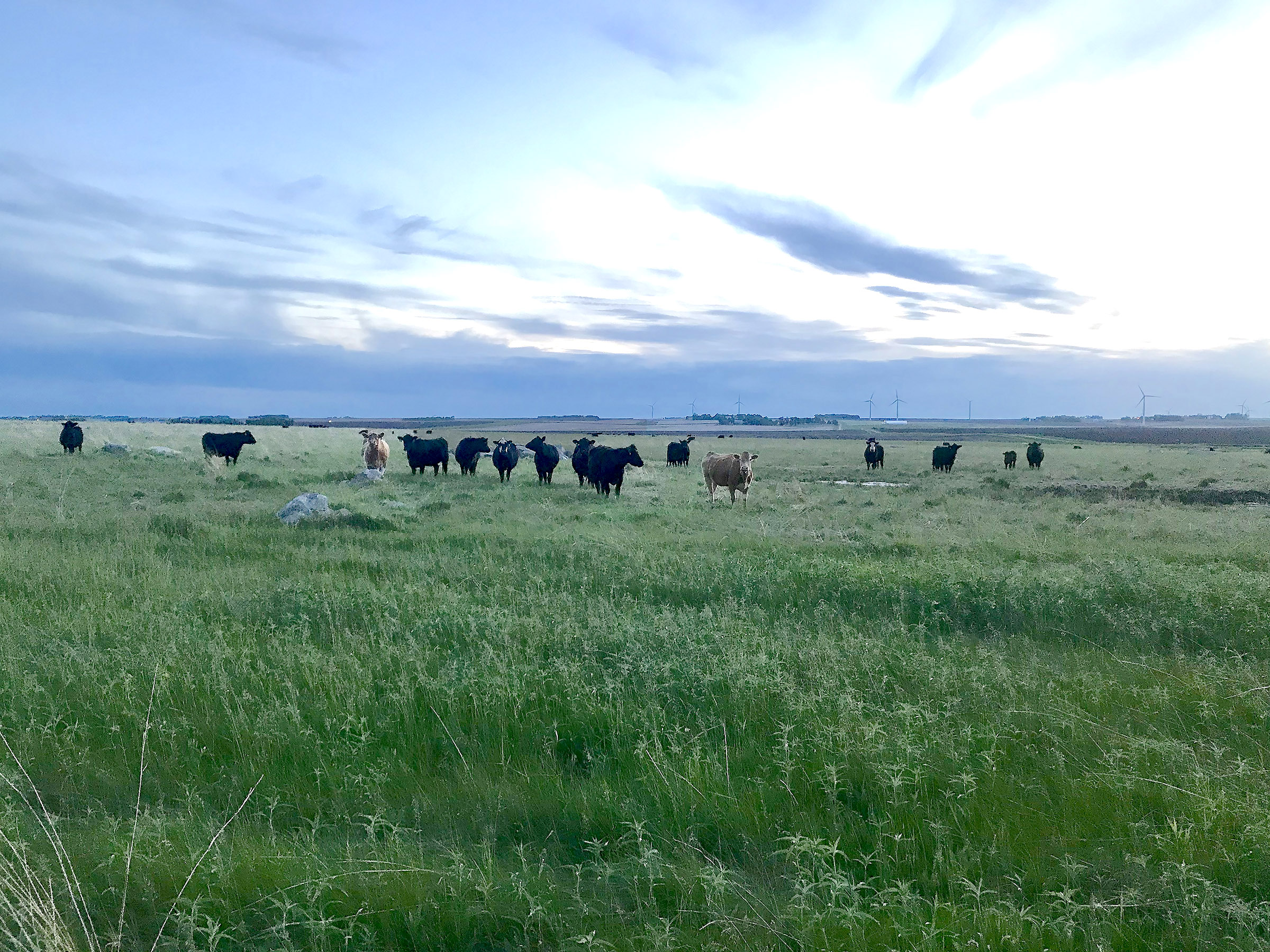
A herd of cattle is grazing contentedly in the tall green grasses of Touch the Sky Prairie northwest of Luverne as part of a prairie management program through the U.S. Fish and Wildlife Service.
The agency is in charge of managing non-native species in the prairie restoration project, and grazing — along with controlled burns — is becoming an effective tool in that process.
This year 120 head of cattle are grazing 120 acres in the north edge of the 1,000-acre Touch the Sky Prairie.
The timing depends on which plant species biologists are targeting and the growing conditions each spring, according to Marty Baker, biological science technician with the Windom office of U.S. Fish and Wildlife Service.
“There are meticulous things that we key in to allow this grazing process to happen,” Baker said.
This year it’s brome grass and Kentucky blue grass, which are prolific in local pastures and ditches but not native to prairies.
Around May 22, these two species were expected to reach a reproductive state that would be best for grazing, and that’s when the cows were turned loose in the tall grass.
“It’s an excellent feed source for them,” said Baker. “When the cow walks out there, the grass is up to her shoulder.”
Grass is greener, but rules are strictive
Green grass is always attractive to cattle producers, but conservation grazing rules aren’t always practical.
For one thing, farmers are responsible for their own fencing around the identified grazing areas, and the grazing time frame is typically only a few weeks in the spring, depending on weather.
The cattle currently grazing Touch the Sky Prairie started May 26, and they’ll be gone at the end of June after the non-native species are grazed down.
“In order to graze it for the good of the prairie, there’s a narrow window to do it,” Baker said.
For most producers it’s hardly worth the effort of fencing and moving the cattle. The contracts are for three-year terms, and fences can remain intact during that time, but they often require maintenance after a long grass and heavy snow lean on electric wires.
Cattle farmers in Rock and Pipestone counties were invited earlier this year to bid on the grazing opportunity with U.S. Fish and Wildlife Service for mid-May through the end of June.
When there weren’t any takers, Baker reached out to Tracy cattleman Ryan Verlinde, who has previously contracted for conservation grazing in Murray County.
“It’s a good deal,” Verlinde said. “Any time you don’t have to run diesel fuel to haul feed and manure, it’s a good deal. … It’s always cheaper to haul cows to the feed than feed to the cows.”
This year, with flooded feedlots and pastures, Verlinde said grass is particularly welcome.
“Your herd health is so much better on grass,” he said, “especially this time of year when you can get them out of that muddy feedlot.”
While it would seem counterintuitive to haul cattle that many miles for only a few weeks of grazing, Verlinde said it’s well worth his effort, especially since he’s made modifications with fencing and cattle moving to make the process smoother.
“It buys us more time before we go to our own pastures,” he said. “If you go out there too early, you tend to overgraze it pretty quick.”
As far as Baker is concerned, it’s all about the condition of the prairie.
“We are doing it for the good of the prairie and for wildlife habitat,” he said. “We are not dong it to give the producer another pasture.”
Wildfires, grazing, rest
Protecting and preserving prairie ecosystems at one time involved setting them aside entirely from environmental impacts, but over time, biologists discovered they needed to do more.
“We have found that resting the prairie is up to six times worse than we originally believed,” Baker said, adding that prairies have never really been at rest.
“During pre-settlement times, large herds of bison and elk would graze prairies heavily for a period of time, and then move on, not returning for several months or years.”
He said wildfires were common, followed by periods of rest.
“The prairies responded by increasing flowering plants, seed production and diversity,” Baker said.
“We can take advantage of this process and use grazing to increase plant diversity, structural diversity (short and tall vegetation, and sparse and dense areas) and reduce invasive non-native plants.”
Grazing Touch the Sky Prairie is part of a study of native prairie adaptive management that began in 2010. So far it has resulted in a 6-percent increase in native species, and grazing had little to no impact on nesting.


